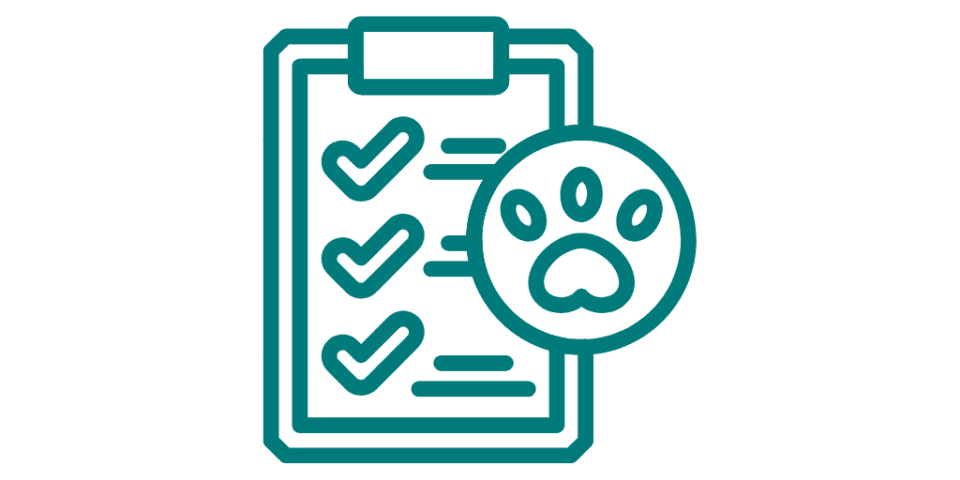
If you’re a human-health biotech or pharma company eyeing the animal-health market, you’re not alone. Pet-owner spending, food-animal productivity pressures, and “One Health” thinking have pushed more human-first innovators to explore veterinary indications, either by repurposing an existing asset or launching a dedicated animal program. The opportunity is real, but so are the differences. Below is a practical guide to what carries over, what doesn’t, and how DSI helps you make a confident, well-sequenced move.
Why Animal Health is Attractive for Human-Health Innovators
- Faster paths to value (often): Study sizes, site networks, and some regulatory expectations can be less burdensome than in human health, letting you learn (and iterate) quickly.
- Diversification: A veterinary revenue stream can extend runway and de-risk core human programs.
- Signal amplification: Mechanism-of-action success in animals can add credibility for parallel human indications (and vice versa).
- One Health: Zoonotic interfaces and shared biology can create synergistic R&D.
What’s the Same: Transferable Strengths
- Core science: Target biology, structure-activity relationships, and platform know-how (e.g., small molecules, mAbs, RNA, cell and gene approaches) carry over.
- CMC fundamentals: GMP expectations (CVM), method robustness, stability strategies, impurity control, and comparability thinking remain central.
- Regulatory discipline: Clear study objectives, protocol quality, well-kept data, and audit readiness matter in any market.
- Quality culture: CAPA systems, supplier oversight, and data integrity are just as important for veterinary products.
- Lifecycle mindset: Post-market surveillance, change management, and ongoing compliance continue after approval.
What’s Different: The Factors That Make or Break a Vet Strategy
1) Regulatory Gatekeepers and Pathways
- Agencies:
- Human drugs/biologics: FDA (CDER/CBER) and global counterparts.
- Veterinary drugs: FDA CVM.
- Veterinary biologics (e.g., many vaccines): USDA-APHIS CVB (not FDA).
- Some antiparasitics and topicals may be under EPA.
- Pathways & dossiers: Expect different technical sections, study designs (field effectiveness, target-animal safety), and submission formats (e.g., NADA/ANADA for drugs; product license packages for biologics). Knowing which agency owns your product is the first critical fork in the road.
2) Clinical & Field Studies
- Patient vs. client-owned animals: Many veterinary pivotal trials are conducted in real-world settings with client-owned animals; this affects recruitment, consent, endpoints, and compliance.
- Endpoints & success criteria: Outcomes can prioritize clinically meaningful improvements as seen by veterinarians and owners (e.g., pruritus scores, lameness assessments) rather than purely biomarker-heavy endpoints.
- Comparator and standard-of-care: Varies by species and geography; “placebo vs. active control” decisions require market and ethical context.
3) Species, Dose, and Formulation Nuances
- PK/PD & metabolism: Cross-species translation is not trivial. Dogs, cats, horses, cattle, poultry, and swine differ in absorption, metabolism, and tolerability.
- Palatability and user experience: , Chewables, pour-on or spot-on formulas, palatants, dose volumes, and ease of administration drive adherence and real-world effectiveness.
- Residues & withdrawal times (food animals): You must plan residue studies and define slaughter/milk withdrawal intervals early.
4) CMC for Veterinary Reality
- Scalable, species-appropriate dosage forms: Chewables vs. tablets, injectables with practical volumes, stability under farm or clinic conditions.
- Potency & release: Method suitability for veterinary matrices, robustness across palatants/excipients, and realistic hold times/logistics.
- Supply chain: Distributors, clinics, and on-farm storage conditions create different stressors than hospital pharmacies.
5) Economics, Labeling, and Market Access
- Pricing & channel: Clinics, e-commerce, and distributor dynamics differ from human specialty pharmacy models.
- Label claims: Precision matters. Labels must reflect species, dose, indications, contraindications, and user safety, often with owner-facing instructions.
- IP & exclusivity: Data exclusivity rules and generic entry timelines differ from human frameworks; plan accordingly.
6) Safety & Pharmacovigilance
- Target-animal safety standards, owner and veterinarian instructions, and post-market complaint handling need veterinary-specific SOPs and tools.
- Environmental safety (especially for food animals and parasiticides) may require extra risk assessments.
Go/No-Go: Is Your Asset a Fit for Animal Health?
Before you invest heavily, pressure-test the fundamentals:
- Biological plausibility across species (e.g., target conservation, expected efficacy/safety margins).
- Market need & competitor landscape (including compounded products, Off label use of human drugs and generics).
- Dosage form feasibility (palatability, dose size, route).
- Manufacturability (cost-of-goods for veterinary pricing).
- Regulatory home (CVM vs. USDA vs. EPA) and the implications for your timeline, cost, and dossier.
A Practical Roadmap for Human-to-Animal Transition
1. Rapid Feasibility Screen:
- Species/indication mapping, regulatory owner, preliminary CMC/formulation fit, and early commercial reality check.
2. Regulatory Strategy & Study Blueprint:
- Define pathway (e.g., drug vs. biologic), pivotal effectiveness concept, target-animal safety plan, and CMC milestones.
3.CMC Gap Analysis & Method Plan:
- Analytical methods, potency/identity/purity strategies, stability, and tech-transfer requirements to animal-appropriate formats.
4. Development Execution:
- Pilot formulation, TAS studies, field trial vendor selection, quality system tailoring, and clinical operations playbook for vet sites.
5. Submission & Review Support:
- Assemble, quality-check, and submit the package; manage information requests; prepare labeling and launch readiness.
- Post-Approval & Scale:
6. Submission & Review Support:
- PV system, change management, second-species expansions, and lifecycle economics.
How DSI Helps: From First Data Check to Full CMC-RA-QA Delivery
DSI’s Veterinary Medicines Solutions team supports human-health companies crossing into animal health with an end-to-end, time-and-materials model that flexes to your needs. Here’s what that looks like in practice:
Early Investment Confidence
- Initial data review & fit assessment: We stress-test whether an animal-health move makes scientific and economic sense, before you commit major budget.
- Regulatory owner & pathway mapping: We determine whether your product sits with FDA CVM, USDA-APHIS CVB, or EPA, and outline the implications for studies, timelines, and costs.
- Go/No-Go clarity: Objective recommendations grounded in biology, CMC reality, and market dynamics.
CMC, Regulatory, and Quality Execution
- CMC development & tech transfer: Dosage-form strategy (e.g., palatable chewables, practical injectables), analytical method development/validation, stability plans, and manufacturing readiness.
- Regulatory affairs: Authoring and managing submissions (e.g., veterinary drug applications or biologics packages), health-authority meeting prep, labeling strategy, and response management.
- Quality & compliance: GLP/GMP/GCP(V) frameworks adapted for vet programs; CRO/CMO audits; data integrity and PV systems fit for clinics and farms.
Study & Vendor Orchestration
- Design and oversight of target-animal safety and field effectiveness studies, including site selection, investigator training, monitoring approaches suited to client-owned animals, and real-world data capture.
- CRO/CMO selection & management with clear scopes, KPIs, and inspection readiness baked in.
Launch & Lifecycle
- Submission assembly and review support, labeling and owner-use materials, complaint/PV processes, and change-control governance for post-approval agility.
- Second-species and new-indication planning to extend asset value.
Explore our Veterinary Medicines solutions page for additional detail on our approach and case experience: https://dsinpharmatics.com/veterinary-medicine/
Common Pitfalls (and How We Prevent Them)
- Unclear regulatory owner → delays: We pin this down early and align your whole plan.
- Human-centric formulations in animals: We design with species behavior, dosing realities, and palatability in mind from day one.
- Underpowered or mis-scoped field studies: We help choose endpoints, controls, and site types that regulators and veterinarians respect.
- CMC surprises late in development: Our gap analyses surface method and stability risks early—when fixes are cheap.
- Post-approval scramble: We build PV, change management, and supply robustness before launch.
With the right guidance, human health innovators can bridge the species gap, mitigate risks, and unlock new value in the fast-evolving veterinary space. At DSI/PLG, we specialize in helping crossover companies confidently navigate the animal health regulatory environment with clarity, speed, and strategic precision.




